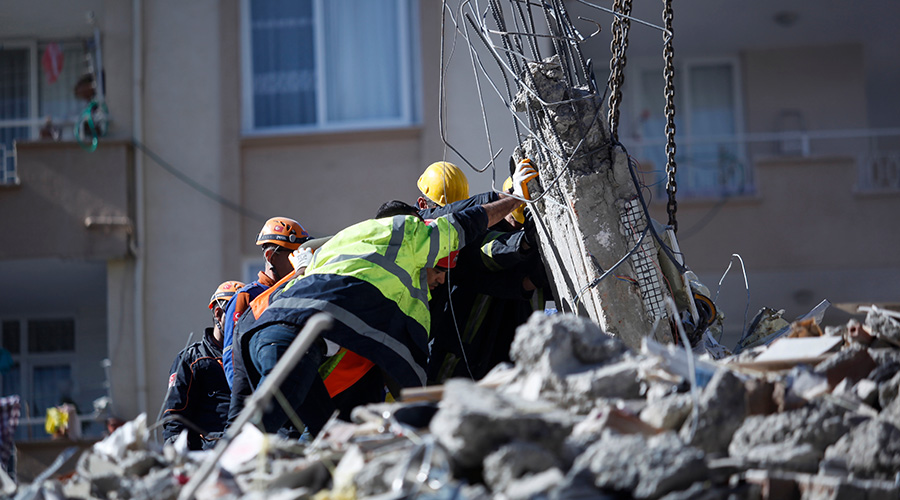Avoiding Pitfalls In LEED Certification
A common pitfall in pursuing LEED certification is that the actual awarding of certification comes after move-in. There is always the possibility that all credits will not be approved and a project could fall a point or two short of its target. It's best to plan to have a margin of a couple of extra points just in case. Also, credit appeals can extend the certification period well beyond project completion and contractor close-out, which can make locating requested project information challenging. All LEED submittal data should be obtained early along with shop drawings.
Some other of the most common LEED pitfalls are added costs, both soft and hard, and additional time compared to the traditional design and construction process. For example, a two-week air flush-out needs to be built into the schedule, as well as time for enhanced commissioning. If a planned flush-out becomes impractical because of summer or winter weather, the alternate is air testing, which is not a guaranteed point despite the need to pay test fees.
Slab curing and installation of carpeting with low VOC adhesive may also require additional time. The lesson here is to plan well in advance and schedule the sequencing of the work, such as painting before installing carpet and ceiling tiles to ensure good indoor air quality later, in a thoughtful manner.
Finally, there are risks of product failure. With hundreds of new green building products hitting the market every day, many are not proven. "Roadoyl" was a light paving alternative to asphalt introduced 10 years ago. After five years it deteriorated badly but the manufacturer was no longer in business. When bamboo flooring made its market debut, it was beautiful, cost-effective and sustainable. But all manufactured bamboo flooring is not created equal and softer products are prone to unsightly high-heel marks.
While it's always important to be careful of manufacturers that make unsubstantiated claims, there are trustworthy certifications for sustainable products from third parties such as Green Seal and Greenguard.
Fitting Out and Up
When planning a sustainable design in a portion of an existing building, the base building infrastructure requires evaluation and assessment. The owner for the base building may be willing to adopt CI sustainable design and construction guidelines for all tenants, like low mercury content lamps, green cleaning, and low VOC content products. Elimination of CFCs in cooling systems may also be feasible.
However, there is no certainty that a project will drive sustainable design improvements in the base building, such as water or energy efficiency or recycling, so that it meets the prerequisites for LEED certification. This shouldn't stop you from embracing the principles of sustainable design.
If you manage a building in this situation, you may want to consider LEED EBOM. That rating system requires evaluating the performance of the HVAC systems along with building policies and procedures such as recycling, cleaning, and procurement, but no design drawings need to be produced. An Energy Star rating of 69 is the major prerequisite.
Sustainable design has definitely passed its infancy and the industry has amassed a great deal of knowledge in a short time. As we all embrace broader sustainable practices, we accelerate the accumulated body of knowledge. Exponential advancement in the design of built environments is achievable. These are very exciting times for collaboration between facility managers, building owners, land planners, architects, interior designers, engineers, contractors and manufacturers. The challenges are great but the rewards for the environment and future generations' quality of life are even greater.
Michael Bourque, principal, works in NELSON's Boston office and John Albrecht, AIA, LEED AP BD&C, senior sustainability specialist, is based in Chicago. NELSON is one of the top ranked providers of interior design to the corporate and institutional markets, and integrates sustainable design into its entire methodology. The firm has more than 25 projects registered for LEED certification in the past year alone.
CREDITS
Tough LEED Decisions
Trade-offs during design may be needed to earn some LEED credits. If the local materials credit is not feasible because of a lack of manufacturers within the 500-mile radius, local products may still be specified with an eye to other credit contributions. Higher performance equipment may have a higher initial cost but result in long-term energy and cost savings. A classic trade-off within LEED is between energy efficiency and increased ventilation — lower energy bills or fresher air?
Often, evaluations need to be made between other credits, such as higher recycled content in a product made in Italy and lower content in a product made locally. Which credit makes more sense? Sometimes trade-offs result in tough choices but, more often than not, they become obvious after a team discussion.
— Michael Bourque and John Albrecht
|
Related Topics:














